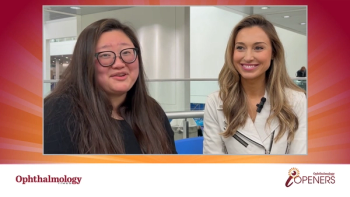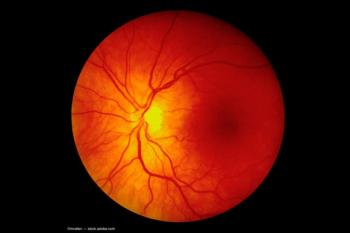
The sound of music before cataract surgery
A web app-based personalized music intervention before cataract surgery may lower anxiety levels or reduce the need for sedative medication.
Use of an app-based personalized music intervention before cataract surgery may lower anxiety levels and hypertension or reduce the need for sedative medication, reported Gilles Guerrier, MD, PhD, from the Department of Anesthesia and Intensive Care, Hôpital Cochin, Assistance Publique-Hôpitaux de Paris, Paris.
He and his colleagues pointed out that hypertensive events occurring during cataract surgery can cause complications. They tested personalized music choices to determine the usefulness of music for preventing intraoperative anxiety.
In a randomized, single-masked, controlled clinical trial, the clinicians identified 311 patients who were undergoing phacoemulsification for a first eye cataract procedure performed under local anesthesia and enrolled.
The patients were randomized for 20 minutes preoperatively to either the experimental arm in which they were exposed to a web app-based music intervention delivered through headphones or the control arm in which the patients were provided with noise-canceling headphones without music. The main study outcome was the occurrence of at least 1 hypertensive event intraoperatively.
The sound of music
Of the identified patients, 310 (mean age, 68,9 years) were randomized in the study (155 to each arm) and 309 were analyzed (1 participant in the music arm had already undergone cataract surgery in the fellow eye).
Regarding the primary end point, the investigators reported that the incidence of hypertension was significantly lower in the music arm, i.e., 21 (13.6%) events compared with the control arm, i.e., 82 (52.9%) events, a difference of 39.3% (95% confidence interval [CI], 21.4%-48.9%; p<0.001).
The authors also reported that the mean visual measure of anxiety was lower in the music arm, i.e., 1.4 than in the control arm, i.e., 3.1, a difference of 1.5 (95% CI, 1.0-2.1; p=0.005). The mean number of intraoperative sedative drug injections also was significantly lower in the music arm, i.e., 0.04 compared with 0.54, a difference of 0.50 (95% CI, 0.43-0.57; p<0.001).
Dr. Guerrier and colleagues concluded, “The trial suggested that a web app-based personalized music intervention before cataract surgery may be considered to lower anxiety levels and hypertension or reduce the need for sedative medication.”
Reference
1. Guerrier G, Abdoul H, Jilet L, et al. Efficacy of a web app–based music intervention during cataract surgery. A randomized clinical trial. JAMA Ophthalmol. 2021;139:1007-13. doi:10.1001/jamaophthalmol.2021.2767
Newsletter
Don’t miss out—get Ophthalmology Times updates on the latest clinical advancements and expert interviews, straight to your inbox.













































